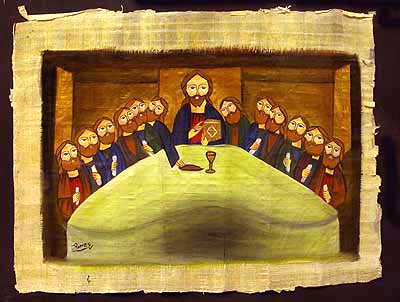Holi by Chughtai
Despite all the bad blood that has shed between India and Pakistan, these two countries share a common heritage, which can't be denied no matter how much one wishes so. This is because of the thousands of years of history we have shared together. One brilliant gem of this common heritage was Muhammad Abdur Rahman Chughtai (1899-1975), a prominent painter who lived through much of the 20th century.
Shakuntala by Raja Ravi Varma
In the 19th century, Raja Ravi Varma had learnt the Western aesthetic ideals and had brought the principals of Western painting techniques to India, which were very different from the traditional painting techniques that had existed in India in the pre-modern period. Ravi Varma was influential in modelling the future art forms, theatre stage settings, film settings and also gave rise to the popular art genre called calendar art in India. On the other hand, He also generated a reaction from the nationalist artists of the sub-continent, who felt that Indian art has to find its own identity. Although they used the shading techniques from the Western art, their art was modelled on the the traditional Indian art practice. This was their contribution towards building a national identity in the Colonial period which played a role in the Indians' struggle against the British Empire.
The major ones amongst these were the followers of Rabindranath and Abanindranath Tagore in Shantiniketan in Bengal (known as the Bengal School), the artists based in Bombay and at Lahore. MAR Chughtai was based in Lahore. He had received art training at the Art Academy set up by the British and also taught art at the Mayo College at Lahore. Hence, eventhough he was trained in the European aesthetics, he developed his own style of art which derived its themes from the Mughal and Persian history and mythology. Amongst the prominent poetic works he illustrated were Diwan-e-Ghalib in Urdu and the Rubaiyyats of Omar Khayyam. In this sense, he continued the manuscript illustration tradition of Mediaeval india.
Chughtai was very popular and drew his clientele from Hindu, Muslim and other groups of people. He painted themes from all religions. His paintings on Buddha, Holi and a representation of "Dream" which shows a couple resembling Radha and Krishna are kept in the National Gallery of Modern Art, New Delhi. After Partition, Chughtai lost the clients from the Indian side as he stayed back in Lahore and hence, he stopped painting Hindu and other non-Muslim themes. This was forced by the situation of partition and not because he had turned "Pan-Islamic" as has been claimed by some scholars.
"Dream" by Chughtai (Couple resembling Radha and Krishna)
During Partition Chughtai had sheltered many Hindus and Sikhs in his house during riots and had saved their lives. Undoubtedly, Chughtai's art is a common heritage for the whole South Asia.
If one looks closely at Chughtai's art, it becomes clear that he was not blindly following the traditional art idiom of India, but eventhough he borrowed from the mediaeval style, his idiom was very modern. His paintings are suffused with emotional abandon and individual expression, which was possible only in modern times. It was not a replication of the mannered, courtly style of the mediaeval miniatures.
Radhika (Radha going to meet Krishna) by Chughtai
Amongst his many paintings is a painting of Laila, the Arab mythical princess who was the centre of attraction for many princes and of Majnu. This legend has become a part of the popular psyche of the people of West Asia and South Asia, as the two regions share many traditions with each other.
Laila by Chughtai
If one looks at Laila, one realises that Chughtai has presented this woman in a very admirable light - to emphasise her attractions. Eventhough she is covered in a cloak, she retains her feminine charms and looks very different from the completely black-covered women of Saudi Arabia of today. Chughtai's Laila has a confidence to be alone in the desert (perhaps waiting for Majnu), while the deer and her facial expression show a softness. This is a woman who is modest, charming, confident and soft, all at the same time. Chughtai's Laila then, is not just an Arab woman, but a new ideal of femininity who can retain her traditional values and also look independent. In this sense, this is very much the South Asian representation of a legendary Arab princess.

























